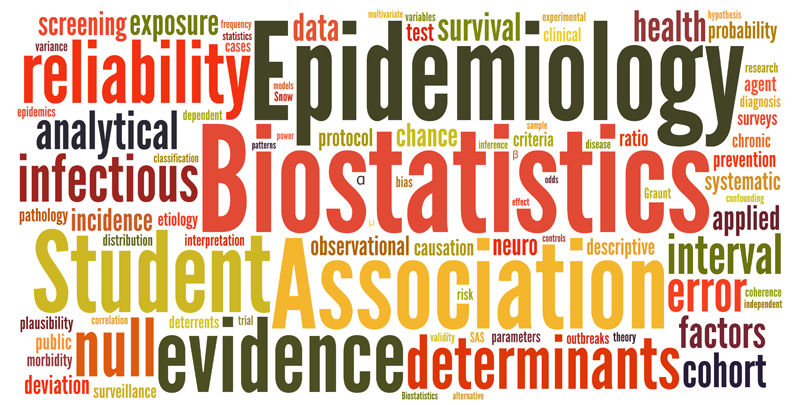თემის მონახაზი
-

The aim of the course is to equip students with deep knowledge and skills to understand the fundamental principles of epidemiology and statistics, such as measures of disease occurrence, indicators of population health, and fundamental principles of outbreak investigation, appreciation of basic statistical concepts (confidence interval and p-value). This course is the preparatory for Epidemiology and Biostatistics II
-
Introduction to the course. Measures of disease frequency.
Epidemiology – Leon Gordis (5th edition) 2014
Epidemiology, Biostatistics, Preventive Medicine and Public Health – D.
Katz, Joann G. Elmore, D.MG. Wild and S. C .Lucan 2014
-
Description of central location (mean, median, IQR mode). Normal distribution.
Epidemiology – Leon Gordis (5th edition) 2014
Epidemiology, Biostatistics, Preventive Medicine and Public Health –
D. L. Katz, Joann G. Elmore, D.MG. Wild and S. C .Lucan 2014
-
Graphical description of data (table, graphs, bars, charts).
Epidemiology – Leon Gordis (5th edition) 2014
Epidemiology, Biostatistics, Preventive Medicine and Public Health –
D. L. Katz, Joann G. Elmore, D.MG. Wild and S. C .Lucan 2014
-
Infectious diseases epidemiology.
Epidemiology – Leon Gordis (5th edition) 2014
Epidemiology, Biostatistics, Preventive Medicine and Public Health –
D. L. Katz, Joann G. Elmore, D.MG. Wild and S. C .Lucan 2014
-
Infectious disease epidemiology (continues).
Epidemiology – Leon Gordis (5th edition) 2014
Epidemiology, Biostatistics, Preventive Medicine and Public Health –
D. L. Katz, Joann G. Elmore, D.MG. Wild and S. C .Lucan 2014
-
Outbreak investigation.
Epidemiology – Leon Gordis (5th edition) 2014
Epidemiology, Biostatistics, Preventive Medicine and Public Health –
D. L. Katz, Joann G. Elmore, D.MG. Wild and S. C .Lucan 2014
-
Outbreak investigation (continues).
Epidemiology – Leon Gordis (5th edition) 2014
Epidemiology, Biostatistics, Preventive Medicine and Public Health –
D. L. Katz, Joann G. Elmore, D.MG. Wild and S. C .Lucan 2014
-
Write up the report.
Epidemiology – Leon Gordis (5th edition) 2014
Epidemiology, Biostatistics, Preventive Medicine and Public Health –
D. L. Katz, Joann G. Elmore, D.MG. Wild and S. C .Lucan 2014
-
Confidence interval for mean.
Epidemiology – Leon Gordis (5th edition) 2014
Epidemiology, Biostatistics, Preventive Medicine and Public Health –
D. L. Katz, Joann G. Elmore, D.MG. Wild and S. C .Lucan 2014
-
Confidence interval for proportion.
Epidemiology – Leon Gordis (5th edition) 2014
Epidemiology, Biostatistics, Preventive Medicine and Public Health –
D. L. Katz, Joann G. Elmore, D.MG. Wild and S. C .Lucan 2014
-
Comparing two means, Pared samples.
Epidemiology – Leon Gordis (5th edition) 2014
Epidemiology, Biostatistics, Preventive Medicine and Public Health
-
Comparing two proportions, small samples.
Epidemiology – Leon Gordis (5th edition) 2014
Epidemiology, Biostatistics, Preventive Medicine and Public Health
-
Public Health indicators.
Epidemiology – Leon Gordis (5th edition) 2014
Epidemiology, Biostatistics, Preventive Medicine and Public Health
-
Screening and diagnostic tests.
Epidemiology – Leon Gordis (5th edition) 2014
Epidemiology, Biostatistics, Preventive Medicine and Public H
-
The natural history of Disease: ways of expressing prognosis
Epidemiology – Leon Gordis (5th edition) 2014
Epidemiology, Biostatistics, Preventive Medicine and Public Health –
D. L. Katz, Joann G. Elmore, D.MG. Wild and S. C .Lucan 2014
